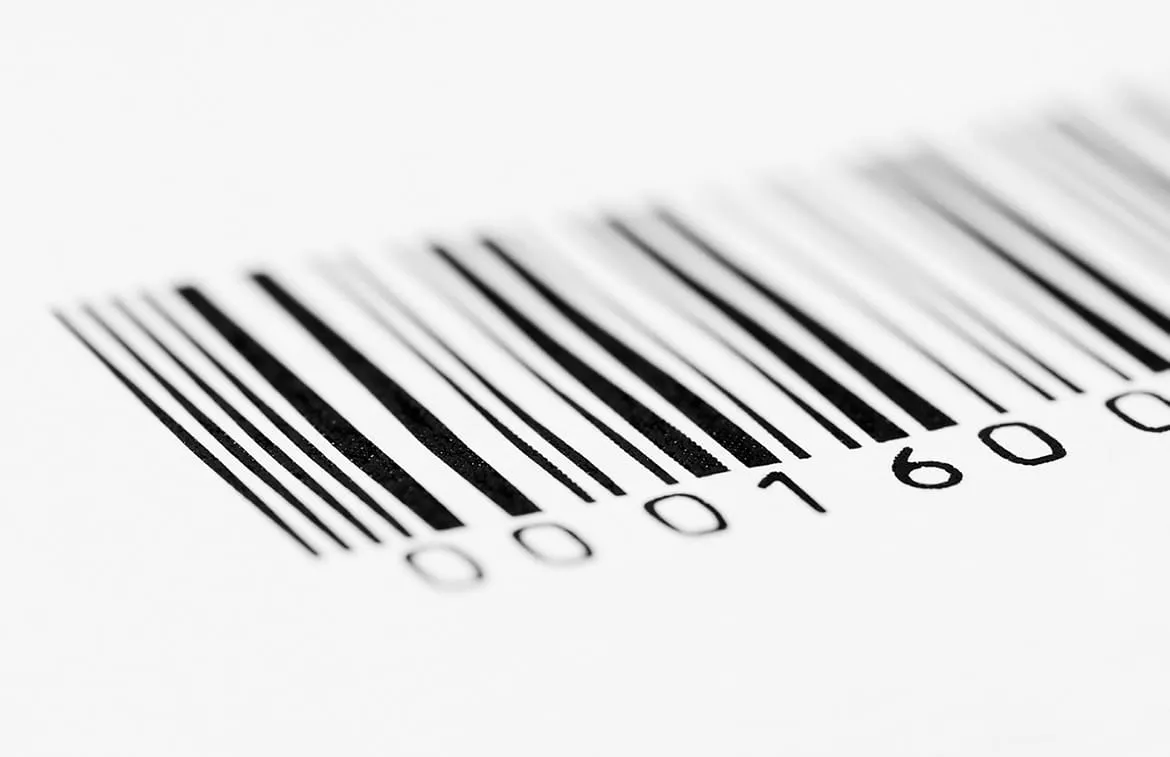Barcodes keep the retail world running smoothly and efficiently. Whether you’re running a multi-national grocery store chain, a mom-and-pop hobby shop, or an online t-shirt store, understanding how an EAN Number and UPCs work is important to running your business. EANs and UPCs are the codes assigned to every product to ensure speedy lookup at your point of sale (POS). But what’s the difference in EANs versus UPCs?
Keep reading to learn more about how these barcodes are similar, where they differ, and how GS1 can help you register your product’s EAN or UPC.
Related Topics
What is an EAN Number?
EAN stands for “European Article Number.” It’s a 13-digit GTIN (Global Trade Item Number) used by retailers across much of the world to identify products when scanned at the POS. The EAN is put into a series of black lines, a code that a scanning system can read. Using an EAN streamlines customer service by allowing a store clerk to quickly and easily price items into the POS system without manually entering pricing.
An EAN can come in two forms: the EAN-13 and the EAN-8. The EAN-13 is the full product code and is used for traditional packaging. The EAN-8 condenses the code from 13 digits to 8, making it ideal for smaller packages. Despite being the shorter form of the product EAN, the EAN-8 scans and functions exactly the same as the full EAN-13.

What is a UPC Number?
UPC stands for “Universal Product Code.” This 12-digit code is primarily used in North America instead of the EAN. There are two kinds of UPCs: UPC-A and UPC-E. The UPC-A is the typical code most people see while shopping for everyday items. It’s the full 12-digit product code that includes all digits. A UPC-E is a compressed version of the UPC, showing just eight digits, suppressing the zeroes. The UPC-E can be used on products that don’t have as much space to print a UPC-A. UPCs are used on products you purchase every day. Whether you’re shopping at your local supermarket or online, each item is assigned a product UPC.

What is the difference between EAN and UPC numbers?
At an initial glance, an EAN and UPC will look identical. The untrained eye probably won’t notice any differences because they’re similar. An EAN is one digit longer than a UPC, which changes the format of the numbers in the code. You can see the difference between an EAN and a UPC by the structure of the numbers below the barcode. A UPC has a trailing check digit on the right side of the bars, while an EAN keeps the check digit inside the bars. The second half of a UPC is made up of the product number inside the second half of the bars.

How do EAN codes work?
A 13 digit EAN code consists of a variable length GS1 Company Prefix, a company code assigned to your business when your register with GS1 and a product number assigned to each item you sell, with a unique combination for each variant. The final number is a check digit, a single number added to detect errors and to authenticate the product number sequence.
The bars above the numbers are arranged with different thicknesses designated for each digit. Laser scanners spread across the code to identify the bars against contrasting negative space. When a scanner “reads” the pattern of the bars, it sends information to a computer that can decipher the code and quickly reference a database to present information like pricing, tracking, product data, and more.
Where are EAN numbers used?
EAN numbers are used internationally, primarily in the U.K. and throughout Europe, as part of a POS system. Retailers can use an EAN to improve customer service and flow at a POS system. Additionally, an EAN plays a significant role in tracking products through a supply chain and inventory management. Chances are, you’ve come across an EAN number and not even noticed.
GS1 UPCs and EANs can be used internationally
EANs and UPCs are primarily used in Europe and North America, respectively. However, this doesn’t limit them to exclusive use in these regions. Both UPCs and EANs can be seamlessly used internationally, allowing for international commerce without registering your products with more than one code. So, if you operate a widget business in New York City, your widgets can be sold in London using the same UPC with which they’re sold in Los Angeles. Registering your barcode with GS1 ensures that a POS from anywhere in the world can retrieve product information without running into problems with duplication or translation.
Getting your products registered according to GS1 standards will ensure each item has a unique barcode assigned to it. You’ll never have to worry about code duplication, regardless of where in the world you’re selling. You can be confident that your EAN code works in the U.S. and that your UPC is functional in Europe. Get in touch with a member of our team to learn more about how we can help you register your products today.


